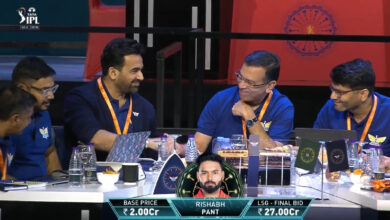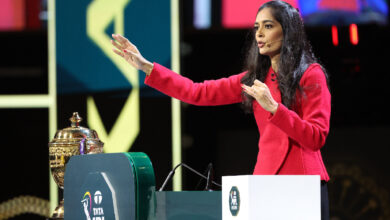Harbhajan Singh should mentor Ravichandran Ashwin, not tarnish spin club camaraderie

Spin bowling is the dark art of cricket. Spinners align their fingers, wrists, elbow in mysterious ways (at times even illegally) and pivot their bodies into unnatural positions. They also have to master the art of outfoxing the batsmen. As a fast bowler, you can blow away a batsman with pace, while as a spinner you have to bamboozle a batsman with deception. One inflates your ego, the other destroys your opponent’s ego.
The members of this spin bowling club are known to share great camaraderie and rivalry at the same time. You might never see India’s legendary spin bowling trio of Bishen Singh Bedi, Bhagwat Chandrasekhar and Erapalli Prasanna giving an interview and not praising each other.
Anil Kumble and Shane Warne had a almost two-decade long rivalry during which nothing hurt them more than losing their wicket to each other. Kumble still never gets tired of reminding everyone that he has a Test century and Warne doesn’t. Yet, the two men hold each other in the highest of regard whenever their spin bowling prowess is discussed. Even part time leg spinner Sachin Tendulkar recounts how beating Warne with a googly in the second innings at Kolkata in 2001 was one of the most satisfying things he ever did as a cricketer.
In recent times, sub-continent spinners have started completely dominating home Test series. Ranganna Herath, Yasir Shah, and Ravichandran Ashwin are almost single-handedly winning Test matches and gratifying spin bowling connoisseurs. It was heartening to see spinners doing well, when ICC’s crackdown on illegal actions had some people saying spinners will be reduced to a defensive role if they don’t get more leverage with their actions.
In the recently concluded Test series between India and New Zealand, Ashwin reached the top of ICC Test ranking. After making a habit of picking five-wicket hauls and man of the series awards, it didn’t come as a surprise to anyone. It was a deserving recognition of a champion bowler.
Ashwin has worked hard on his game across all formats. He thinks more about his bowling action, variations, and how opposition batsmen tackle him than perhaps any other spinner in the game. After struggling with trying to bowl too many variations in Tests for a few years, he has worked out his strategy and fixed minor chinks in his actions. Now, he likes to get into a long spell and bowl a consistent line and length, beating batsmen with subtle variations.
There has been some fair criticism as well about Ashwin’s lack of success in venues like England, Australia, and South Africa. Ashwin will be as keen as anyone else to get better returns in places that don’t suit spin bowling. He isn’t the only spinner after all who has struggled to adjust to all conditions. Kumble achieved success in Australia quite late in his career. Warne could never quite conquer India. Muralitharan had a Test bowling average of 75 in Australia compared to his overall average of 22. Spinners will always do better in helpful conditions or when playing against lesser players. As Albert Einstein said, “One can’t judge a fish by its ability to climb trees.”







